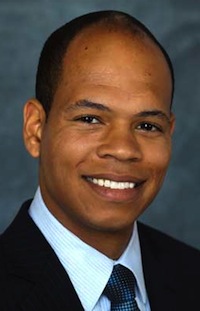The language of stem cells, decoded
Stem cells are biological building blocks, the starting point of human life. But without proper direction, they’re not very useful when it comes to treating disease.
“If we just take stem cells and inject them into you, they will simply become a cancerous tumor,” says Randy Ashton, a University of Wisconsin–Madison assistant professor of biomedical engineering.

Ashton
Working in the Wisconsin Institute for Discovery, Ashton is seeking to instruct the development of human stem cells in the lab by using the molecules cells already use to communicate with one another.
“We are trying to understand how particular tissues arise in development,” says Ashton. “Then, using human pluripotent stem cells, we can replicate the signals that allow those structures to develop in order to create tissues that would be therapeutic for different degenerative diseases and disorders.”
For several years, Ashton has worked with two cellular communication molecules — sonic hedgehog and ephrin ligands — that factor into how a stem cell determines which blueprint to work from when it is differentiating into a specific cell type. In a paper co-authored by Ashton, Anthony Conway and other former colleagues at the University of California, Berkeley, and published on Sept. 16 in Nature Neuroscience, Ashton explains the role that ephrin ligands play in creating the proper circumstances for adult neurogenesis, the process by which stem cells can become neurons.
“Basically, a stem cell can ‘sense’ what’s in its environment, and then it makes a decision to determine whether it’s going to become a muscle cell or a brain cell,” says Ashton.
Deeper understanding of stem cell instruction could yield deeper understanding of the origins of specific diseases.
Using recombinant “mimic” forms of each molecule to instruct the stem cells and a biodegradable 3-D scaffold to hold a cluster of cultures together, Ashton has grown increasingly complex tissue structures, specializing in the central nervous system.
“Eventually, we want to be able to rationally design a material that mimics the biological cues that would drive the development of your spinal cord, liver or other organs,” says Ashton.
Building organs and complex tissue structures has obvious benefits — transplanted spinal tissues could be useful in treatment for spinal cord injuries and motor neuron diseases, for example — but there are broader applications as well. Deeper understanding of stem cell instruction could yield deeper understanding of the origins of specific diseases. “We can start to understand how a given disease develops as the tissue develops,” says Ashton.
The Nature Neuroscience paper can be found here.
Tags: engineering, stem cells



